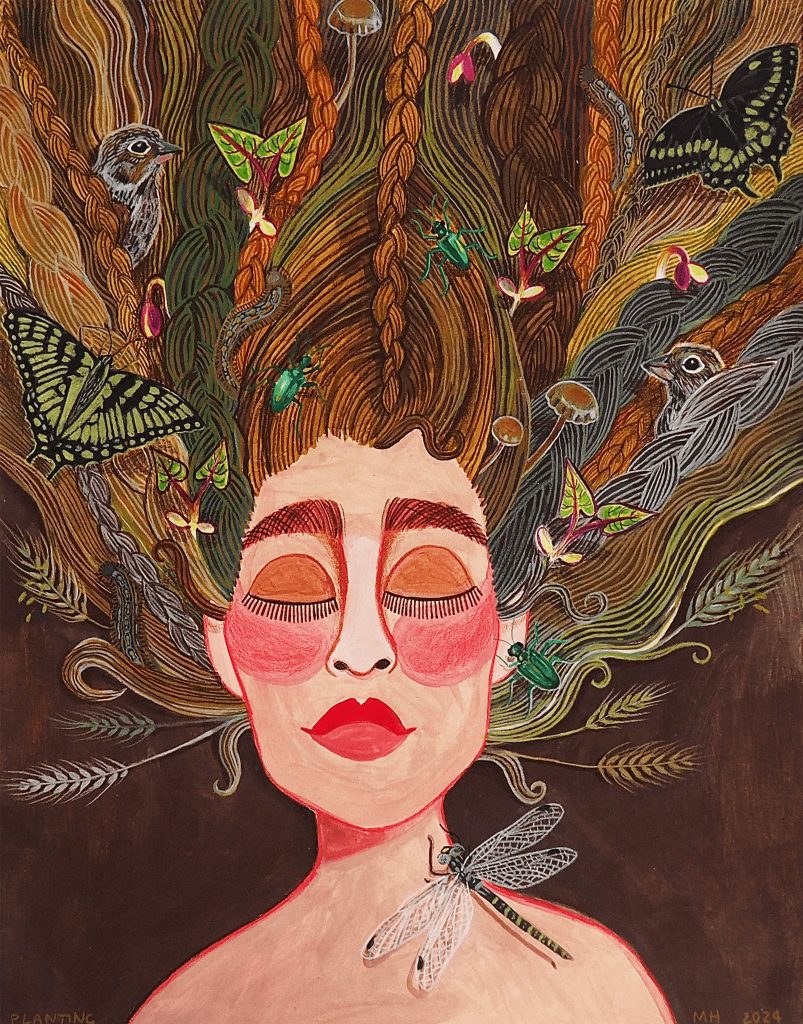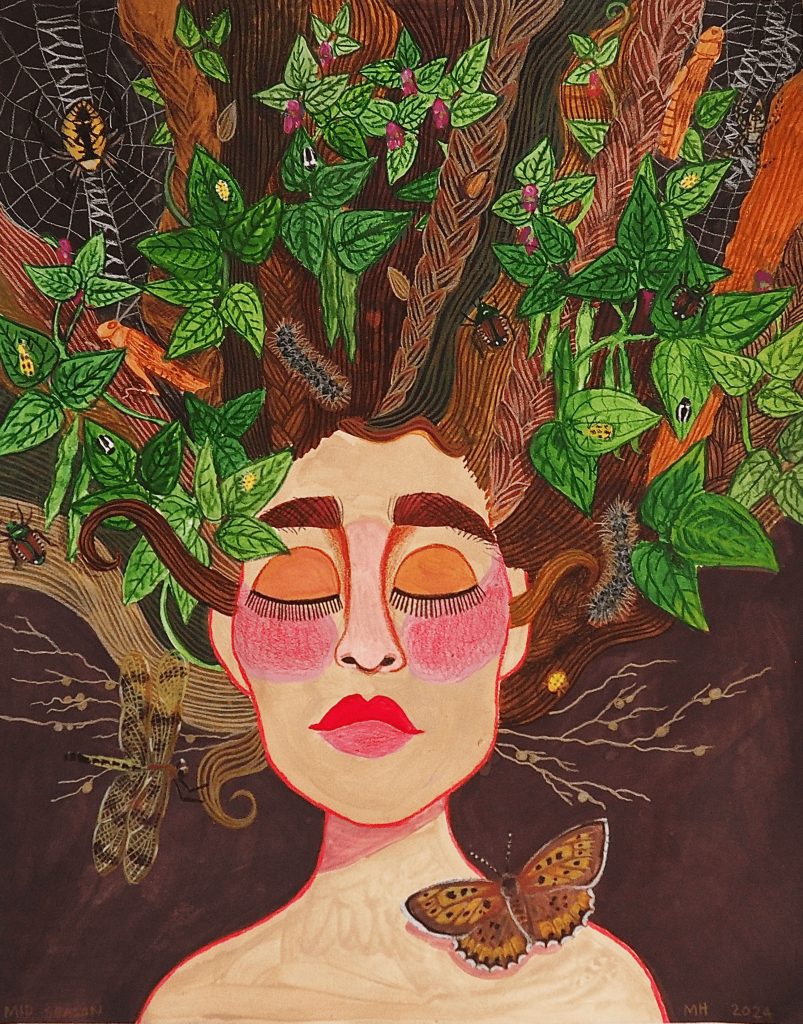Bean Girl
By Madeline Hunter
I’m from Australia, so the drastic changes of the Maine seasons is completely foreign and absolutely enthralling to me. I am studying organic dry beans for my thesis project and last year I spent a lot of time out in the field watching the seasonal progressions of my cropping system in exquisite detail. Each of these paintings aims to capture the essence of a particular stage in that cycle.
The cycle begins with the establishment of winter rye, which is planted in fall, before the Canada geese have flown away. The cheeky geese liked to sit outside the fence and stare dreamily at the fledgling rye plants. The rye remains and stabilizes the soil throughout winter. Soon it starts to warm, the rye grows and begins to tower above you. Little passerine birds have returned with the heat and spend their days playing chasey in the grass. Painting one represents this long period of rye growth, from the slow, cold growth of fall and winter to the rapid explosion of growth in early spring.

Soon it is June, and the butterflies and moths are fluttering about in abundance. The winter rye is flattened and turned into a thick mulch that suppresses weeds and provides a home for myriad little creatures and fungi, seen in painting two. The beans are planted into this mulch. The way the rye seemed to gently plait together when it was flattened reminded me of a long golden braid in a woman’s hair, so I used this image throughout all three works.

As the season progresses, the beans grow quickly, and their twisting vines create the perfect scaffolding for great, yellow orb weavers. This period of growth, up until harvest, is illustrated in painting three.

Each work was painted first in gouache, which provided a beautiful matt layer of color that I then worked into with colored pencil. This method allowed me to create layers of detail, which reflects the layers of life present within each stage of the cropping cycle.

